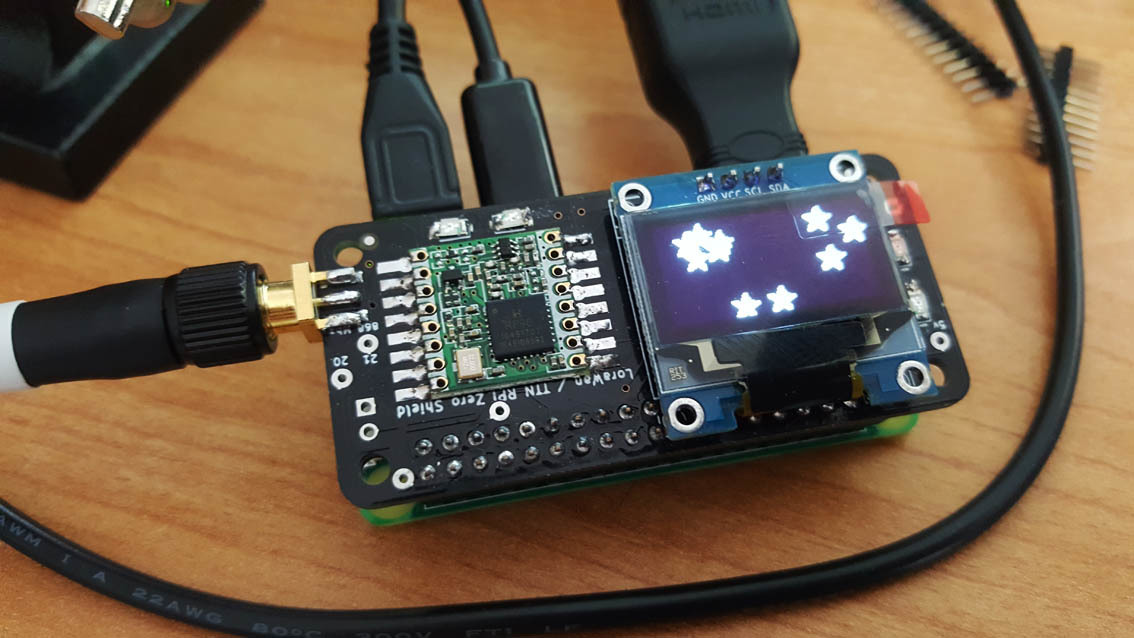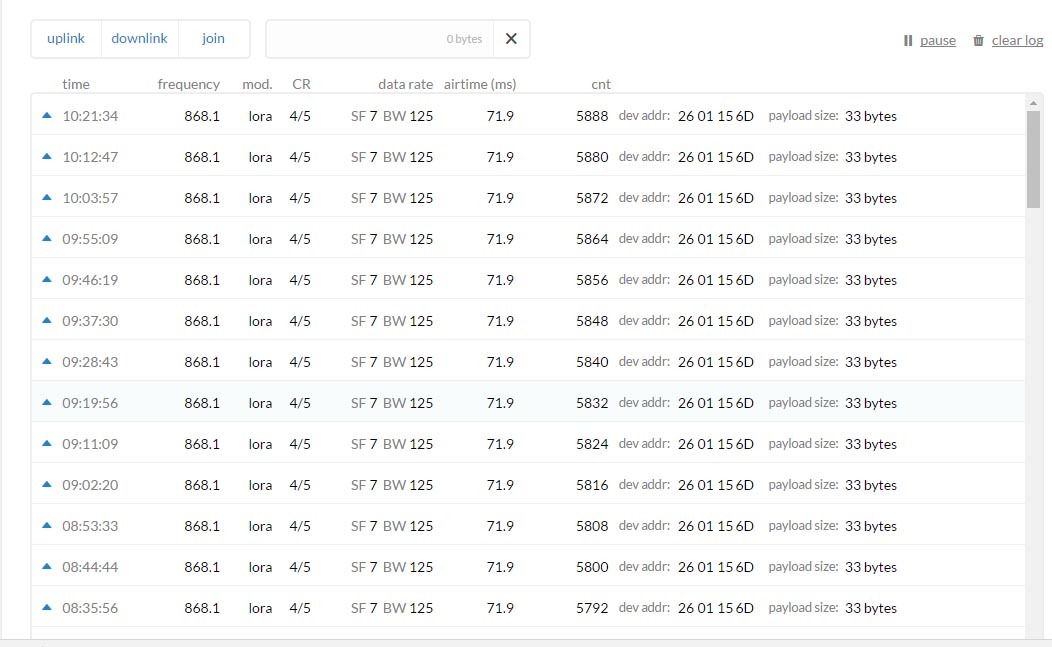Hi @wklenk,
Thank you very much for your Dragino LoRa/GPS HAT Hardware Abstraction Layer for the IBM LMIC library.
I’m trying to use it on my rPi 3 and Dragino HAT but I encounter some problems
I thing I have all prerequisites to run your Hello example but unfortunately it doesn’t work 
# ./build/hello.out
000000000 HAL: Initializing ...
000000001 HAL: Set radio RST pin to 0x00
000000001 HAL: Wait until 000000002 ms
000000002 HAL: Set radio RST pin to 0x02
000000002 HAL: Wait until 000000007 ms
000000008 HAL: Failed. Aborting.
I’m suspecting a pin problems …
I hope, you (or someone else here  ) can help me to get it work.
) can help me to get it work.
Here is an output of gpio readall just a reboot :
+-----+-----+---------+------+---+---Pi 3---+---+------+---------+-----+-----+
| BCM | wPi | Name | Mode | V | Physical | V | Mode | Name | wPi | BCM |
+-----+-----+---------+------+---+----++----+---+------+---------+-----+-----+
| | | 3.3v | | | 1 || 2 | | | 5v | | |
| 2 | 8 | SDA.1 | ALT0 | 1 | 3 || 4 | | | 5v | | |
| 3 | 9 | SCL.1 | ALT0 | 1 | 5 || 6 | | | 0v | | |
| 4 | 7 | GPIO. 7 | IN | 0 | 7 || 8 | 1 | ALT5 | TxD | 15 | 14 |
| | | 0v | | | 9 || 10 | 0 | ALT5 | RxD | 16 | 15 |
| 17 | 0 | GPIO. 0 | IN | 1 | 11 || 12 | 0 | IN | GPIO. 1 | 1 | 18 |
| 27 | 2 | GPIO. 2 | IN | 0 | 13 || 14 | | | 0v | | |
| 22 | 3 | GPIO. 3 | IN | 0 | 15 || 16 | 0 | IN | GPIO. 4 | 4 | 23 |
| | | 3.3v | | | 17 || 18 | 0 | IN | GPIO. 5 | 5 | 24 |
| 10 | 12 | MOSI | ALT0 | 0 | 19 || 20 | | | 0v | | |
| 9 | 13 | MISO | ALT0 | 0 | 21 || 22 | 1 | IN | GPIO. 6 | 6 | 25 |
| 11 | 14 | SCLK | ALT0 | 0 | 23 || 24 | 1 | OUT | CE0 | 10 | 8 |
| | | 0v | | | 25 || 26 | 1 | OUT | CE1 | 11 | 7 |
| 0 | 30 | SDA.0 | IN | 1 | 27 || 28 | 1 | IN | SCL.0 | 31 | 1 |
| 5 | 21 | GPIO.21 | IN | 1 | 29 || 30 | | | 0v | | |
| 6 | 22 | GPIO.22 | IN | 1 | 31 || 32 | 0 | IN | GPIO.26 | 26 | 12 |
| 13 | 23 | GPIO.23 | IN | 0 | 33 || 34 | | | 0v | | |
| 19 | 24 | GPIO.24 | IN | 0 | 35 || 36 | 0 | IN | GPIO.27 | 27 | 16 |
| 26 | 25 | GPIO.25 | IN | 0 | 37 || 38 | 0 | IN | GPIO.28 | 28 | 20 |
| | | 0v | | | 39 || 40 | 0 | IN | GPIO.29 | 29 | 21 |
+-----+-----+---------+------+---+----++----+---+------+---------+-----+-----+
| BCM | wPi | Name | Mode | V | Physical | V | Mode | Name | wPi | BCM |
+-----+-----+---------+------+---+---Pi 3---+---+------+---------+-----+-----+
SPI is activated with raspi config here is an lsmod output :
Module Size Used by
evdev 11396 2
brcmfmac 186403 0
brcmutil 5661 1 brcmfmac
cfg80211 428871 1 brcmfmac
rfkill 16037 2 cfg80211
hid_apple 4925 0
spi_bcm2835 6678 0
i2c_bcm2708 4834 0
bcm2835_gpiomem 3040 0
bcm2835_wdt 3225 0
uio_pdrv_genirq 3164 0
uio 8000 1 uio_pdrv_genirq
i2c_dev 5859 0
ipv6 347556 32
I just have a doubt about spidev I don’t know how to activate it, a modprobe spidev do nothing …
Wiringpi and bcm2835 are installed too.
Thanks for your help 
Regards

